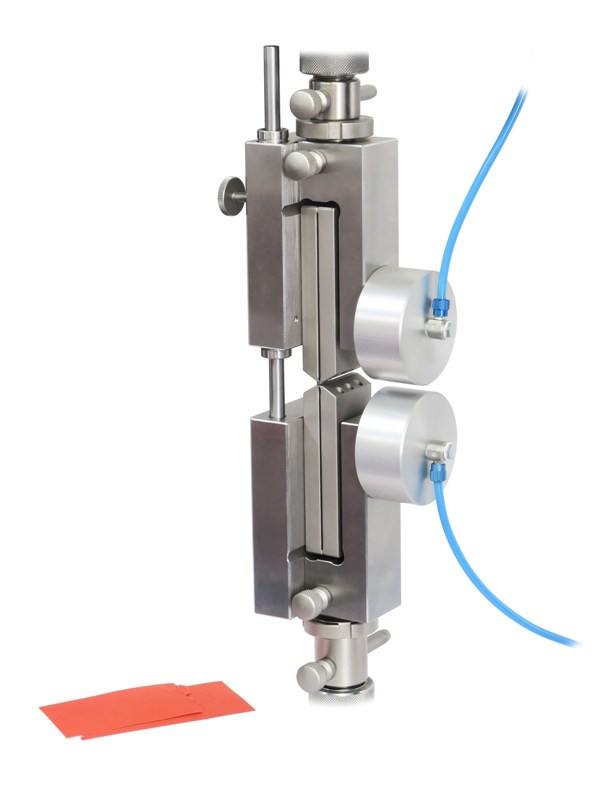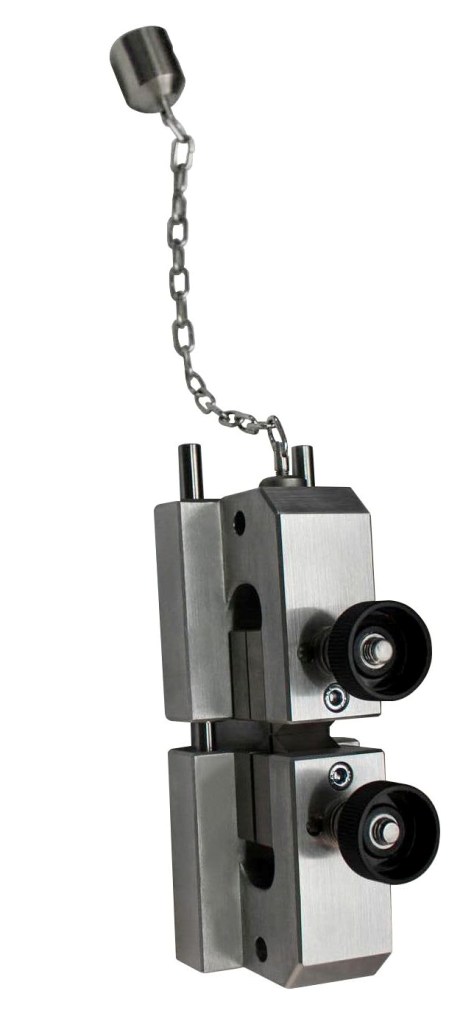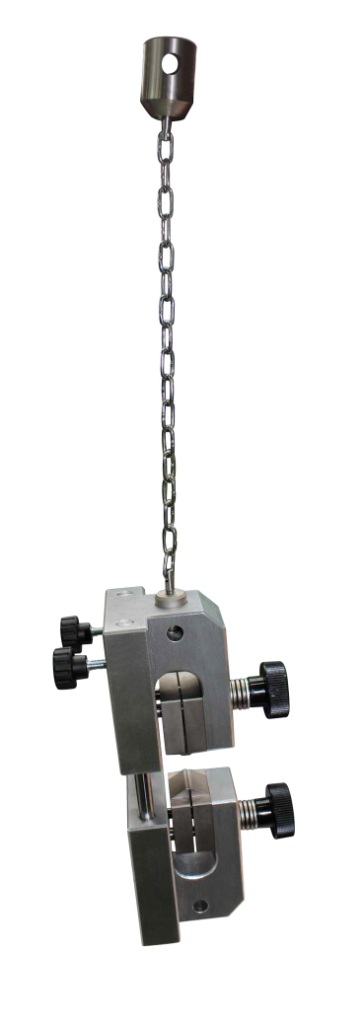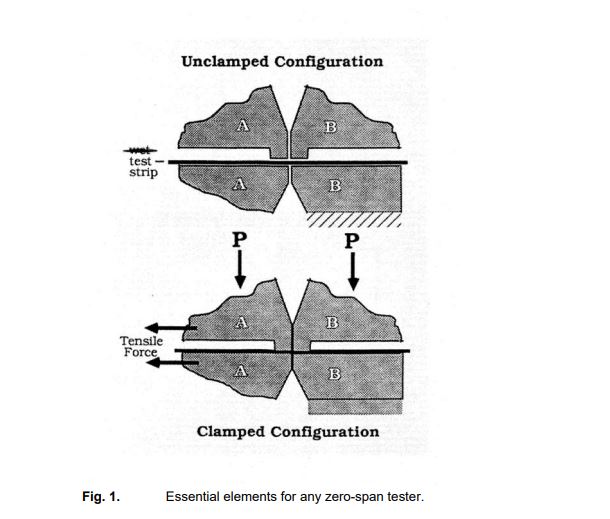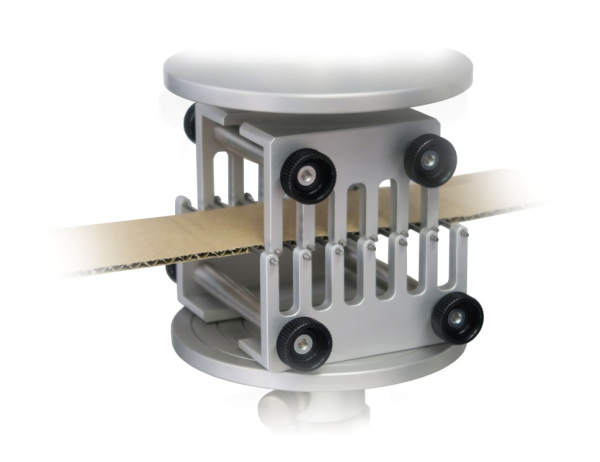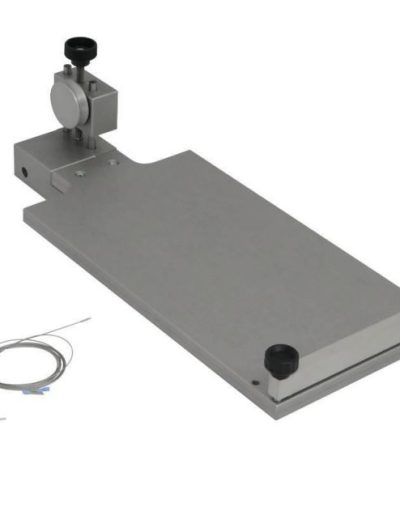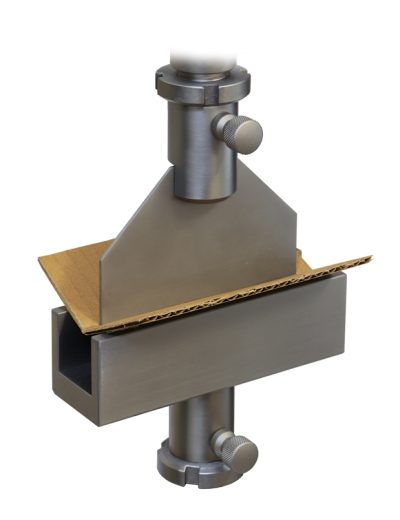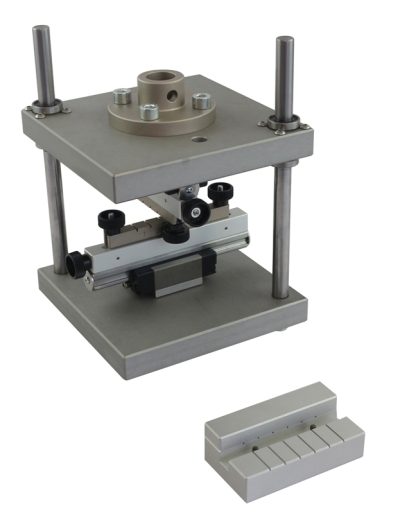TAPPI T231 Test Fixture
TAPPI T231 provides a quick, reliable means to measure the zero-span tensile strength of a randomly oriented specimen of fibers when dry.
Please Contact With Us For More Information
TAPPI T231 Zero-Span Breaking Strength of Pulp (Dry Zero-Span Tensile)
TAPPI T231 provides a quick, reliable means to measure the zero-span tensile strength of a randomly oriented specimen of fibers when dry.
Similar procedures for determining the zero-span tensile strength of a randomly oriented specimen of fibers when wet are found in TAPPI T 273
“Wet Zero-Span Tensile Strength of Pulp” (currently withdrawn).
In this test method, the fibers are tested as a handsheet produced using a standardized procedure such as TAPPI T 205 “Forming Handsheets for Physical
Tests of Pulp.”
While testing is possible on finished paper materials, information on fiber quality from intermediate steps in the pulping or papermaking process, or both,
is frequently more useful for improving finished paper quality or improving fiber utilization of, for example, recycled fibers, or fibers subjected to new pulping,
bleaching, or finishing processes.
The modifications of the standard procedure described in this test method required for testing finished paper is straightforward, however testing must be done
in the two principle directions of the sheet, as required in TAPPI T 494 “Tensile Breaking Properties of Paper and Paperboard (using Constant Rate of Elongation Apparatus),
” since the finished paper or paperboard will generally have non-random fiber orientation, resulting in different strength properties in the two principle directions of
the finished sheet. Testing of sheets having a grammage greater than 100 g/m2, which includes some paper materials described as paper and many paperboards,
is difficult because of problems associated with clamping of individual fibers as the number of fibers per unit area increases.
TAPPI T231 – Apparatus
TAPPI T231 – Zero-span jaws.
Apparatus comprised of two adjacent, spatially aligned clamping jaws in initial intimate contact (“zerospan”),which reliably and reproducibly exert a very high,
optimum and uniform clamping pressure on fibers in test specimen reagent water using a designed procedure.
The essential elements that must be incorporated into any zero-span tester
The clamping pressure required ensures a maximum clamping effect but cannot totally prevent the microslippage whereby the tensile load transmitted in
the clamped fibers is dissipated by frictional shear into the clamping jaws.
This microslippage means that the ends of some fibers will slip out from beneath a clamping jaw thereby diminishing the number of fibers carrying the load at tensile
failure. For this reason, careful interpretation of zero-span tensile strength values must be exercised in order to separate effects due to the relative number of fibers
which are carrying the load at failure and the effects due to the average tensile strength of the individual fibers present in the aggregate.
While firmly clamping the specimen, the clamps must be able to separate at a defined uniform rate of loading until the sample fails.
There are two adjacent clamping jaws which, in an unpressurized configuration, allow a test strip to be inserted between them. In the pressurized configuration
both jaws come together to apply a very high and uniform clamping pressure to the test strip.
This securely clamps the fibers in the specimen that cross the clamping line defined by the intimate and very accurate spatial alignment of the two jaws
at zero-span
*** Before conducting TAPPI T231 , it is important to read the entire specification. Standards can be obtained from appropriate standard authorities.

